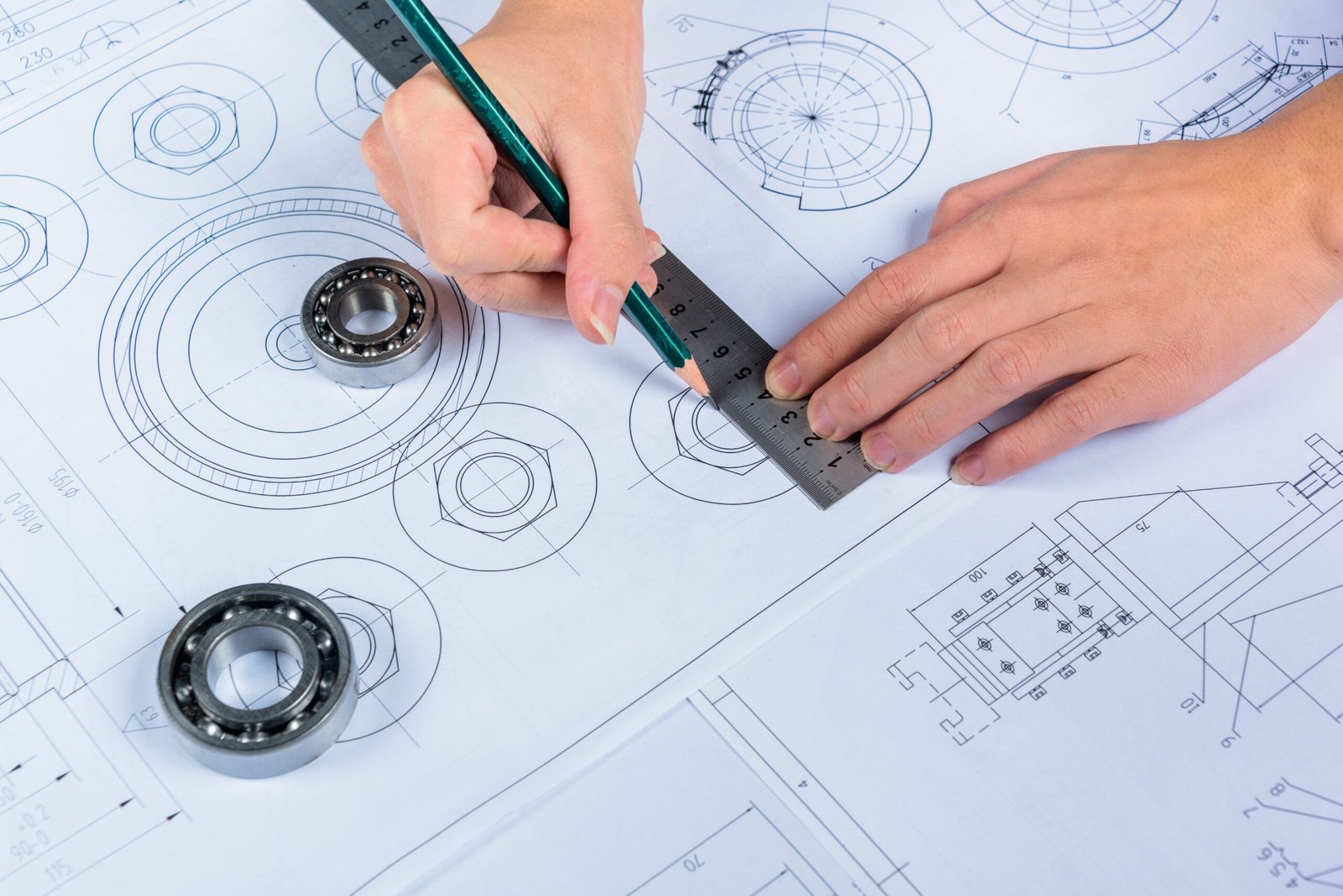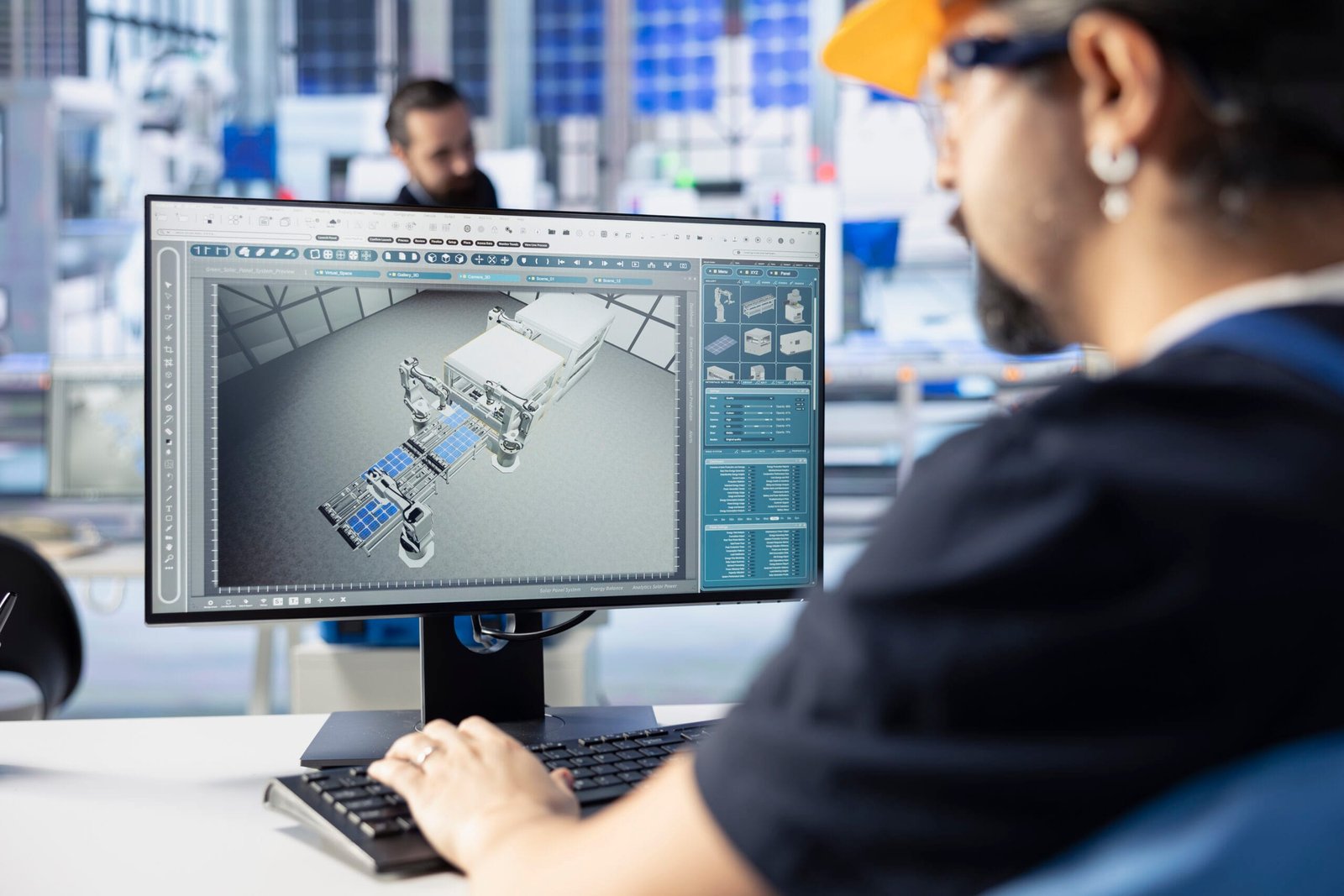Description:
Explore the top Best Software for 3D Modeling options that empower DesignHOK to deliver high-quality, innovative design solutions. Learn about features, advantages, and why these tools are best suited for modern mechanical and architectural projects.
Best Software for 3D Modeling has become an essential component in the field of engineering, architecture, and industrial design. For a professional design firm like DesignHOK, which specializes in mechanical design, Best Software for Best Software for 3D Modeling, rendering, and drafting services, choosing the right software tools is crucial to ensuring both creativity and technical accuracy.
The demand for realistic and functional Best Software for 3D Modeling continues to rise in sectors like manufacturing, construction, product design, and simulation. With countless options available on the market, identifying the most suitable software for specific project needs can be challenging. This blog explores the Best Software for 3D Modeling tools that align with the core services and high standards of DesignHOK.
1. Autodesk Fusion 360
Why It’s Ideal for DesignHOK:
Fusion 360 stands out as an all-in-one solution for mechanical design and product development. It combines CAD, CAM, and CAE tools into a single platform, making it perfect for creating detailed, functional models and simulations.
Key Features:
- Cloud-based collaboration
- Parametric modeling
- Simulation and stress testing tools
- Integrated CAM for CNC machining
- Version control and design history
Benefits for DesignHOK:
Fusion 360 allows designers and engineers to iterate quickly and efficiently. Its cloud features also support remote collaboration, which is critical for teams working on multi-phase design projects. With simulation capabilities, designers can predict real-world behavior early in the development process.
2. SolidWorks
Why It’s Ideal for DesignHOK:
SolidWorks is known for its precision and robust feature set, making it one of the leading tools for mechanical and product design. Its user-friendly interface and advanced modeling functions make it perfect for engineers focusing on detail-driven projects.
Key Features:
- Parametric design capabilities
- Assembly modeling
- Finite element analysis (FEA)
- Integrated motion simulation
- Extensive material library
Benefits for DesignHOK:
SolidWorks is particularly useful for complex mechanical assemblies. DesignHOK can use it to create accurate, detailed component models and test their movement and interactions. Its comprehensive tools for simulation and analysis make it a strong contender for engineering applications.
3. Autodesk Inventor
Why It’s Ideal for DesignHOK:
Inventor is tailored specifically for mechanical design and offers powerful tools for Best Software for 3D Modeling, simulation, and visualization. It also integrates seamlessly with AutoCAD, which is often used for 2D drafting.
Key Features:
- Mechanical part and assembly design
- Simulation and stress testing
- Dynamic simulation tools
- Automation with iLogic
- Compatibility with other Autodesk products
Benefits for DesignHOK:
With Inventor, DesignHOK can automate repetitive tasks and enhance productivity. Its compatibility with AutoCAD supports a smooth workflow between 2D and 3D designs, which is critical for producing technical documentation alongside Best Software for 3D Modeling.
4. Blender
Why It’s Ideal for DesignHOK:
Blender is an open-source Best Software for 3D Modeling that provides extensive modeling, texturing, animation, and rendering capabilities. While it’s popular in the creative industry, its modeling tools are strong enough for engineering and product visualization.
Key Features:
- Polygonal modeling and sculpting
- Advanced rendering with Cycles and Eevee
- Animation and rigging tools
- Real-time viewport preview
- Python scripting support
Benefits for DesignHOK:
Blender is perfect for 3D rendering and product visualization. It allows DesignHOK to produce high-quality images and animations for client presentations. Being free and community-supported, it’s a cost-effective solution for advanced 3D rendering.
5. PTC Creo
Why It’s Ideal for DesignHOK:
Creo is a powerful 3D CAD software developed by PTC that focuses on product design and development. It provides tools for parametric and direct modeling, simulation, and manufacturing.
Key Features:
- Parametric and direct modeling
- Augmented reality (AR) integration
- Generative design tools
- Real-time simulation
- Additive manufacturing support
Benefits for DesignHOK:
With its innovative tools, Creo enables DesignHOK to explore generative designs and test prototypes virtually. The AR integration helps clients visualize products in a real-world context, adding another layer of interaction and insight.
6. Rhino 3D (Rhinoceros)
Why It’s Ideal for DesignHOK:
Rhino is known for its ability to create complex and organic shapes with mathematical precision. It is widely used in industrial and architectural design.
Key Features:
- NURBS modeling for detailed curves and surfaces
- Compatibility with Grasshopper for algorithmic design
- Wide range of plugins for rendering and simulation
- Import/export with many file types
- Easy-to-learn interface
Benefits for DesignHOK:
Rhino allows DesignHOK to model freeform surfaces that are difficult to create with parametric software. It’s particularly useful in product and architectural design projects where aesthetics and form are as important as function.
7. TinkerCAD (for Beginners and Quick Prototypes)
Why It’s Ideal for DesignHOK (Entry-Level Projects):
TinkerCAD is a free, browser-based Best Software for 3D Modeling tool developed by Autodesk. It’s excellent for quick prototyping and introducing design ideas.
Key Features:
- Simple interface for drag-and-drop modeling
- Integration with 3D printing
- STL export for prototyping
- Browser-based access
Benefits for DesignHOK:
While not suitable for complex engineering, TinkerCAD is useful for quick conceptual designs or for explaining ideas to clients who may not be technically inclined.
Choosing the Right Tool for the Job
At DesignHOK, project requirements can vary greatly—from detailed machine parts to product prototypes and large industrial assemblies. Here’s how DesignHOK typically matches software to tasks:
| Task Type | Recommended Software |
|---|---|
| Mechanical Assembly Design | SolidWorks, Inventor |
| Product Visualization | Blender, Rhino |
| Simulation & Analysis | Fusion 360, Creo |
| Conceptual Design | TinkerCAD, Rhino |
| 2D-3D Integration | AutoCAD + Inventor |
Each of these tools brings something unique to the table. By selecting the right software, DesignHOK ensures the highest quality outcomes—both visually and functionally.
Final Thoughts
In a competitive design environment, the quality of tools directly influences the quality of outcomes. DesignHOK continues to deliver high-performance solutions in mechanical and architectural design by using the Best Software for 3D Modeling available. Whether it’s for simulation, visual rendering, or detailed mechanical design, each tool plays a key role in pushing projects forward from concept to completion.
With software like Fusion 360, SolidWorks, and Blender, DesignHOK remains well-equipped to serve clients across multiple industries, ensuring designs are not only innovative but also functional and manufacturable.
Frequently Asked Questions (FAQs)
Q1: What is the Best Software for 3D Modeling for mechanical design?
A1: SolidWorks and Autodesk Inventor are highly recommended for mechanical design due to their robust modeling and simulation capabilities.
Q2: Is Blender good for professional 3D rendering?
A2: Yes, Blender is excellent for professional rendering and animation. Its powerful rendering engines make it ideal for visual presentations.
Q3: Can I use Fusion 360 for both design and manufacturing?
A3: Absolutely. Fusion 360 integrates CAD, CAM, and CAE, making it suitable for both design and manufacturing workflows.
Q4: Is Rhino better than SolidWorks?
A4: Rhino is better for complex, organic shapes, while SolidWorks excels in parametric modeling for mechanical parts. The choice depends on the project.
Q5: Why does DesignHOK use multiple software tools?
A5: Different projects require different tools. DesignHOK selects software based on the specific requirements of each project to ensure optimal results.





